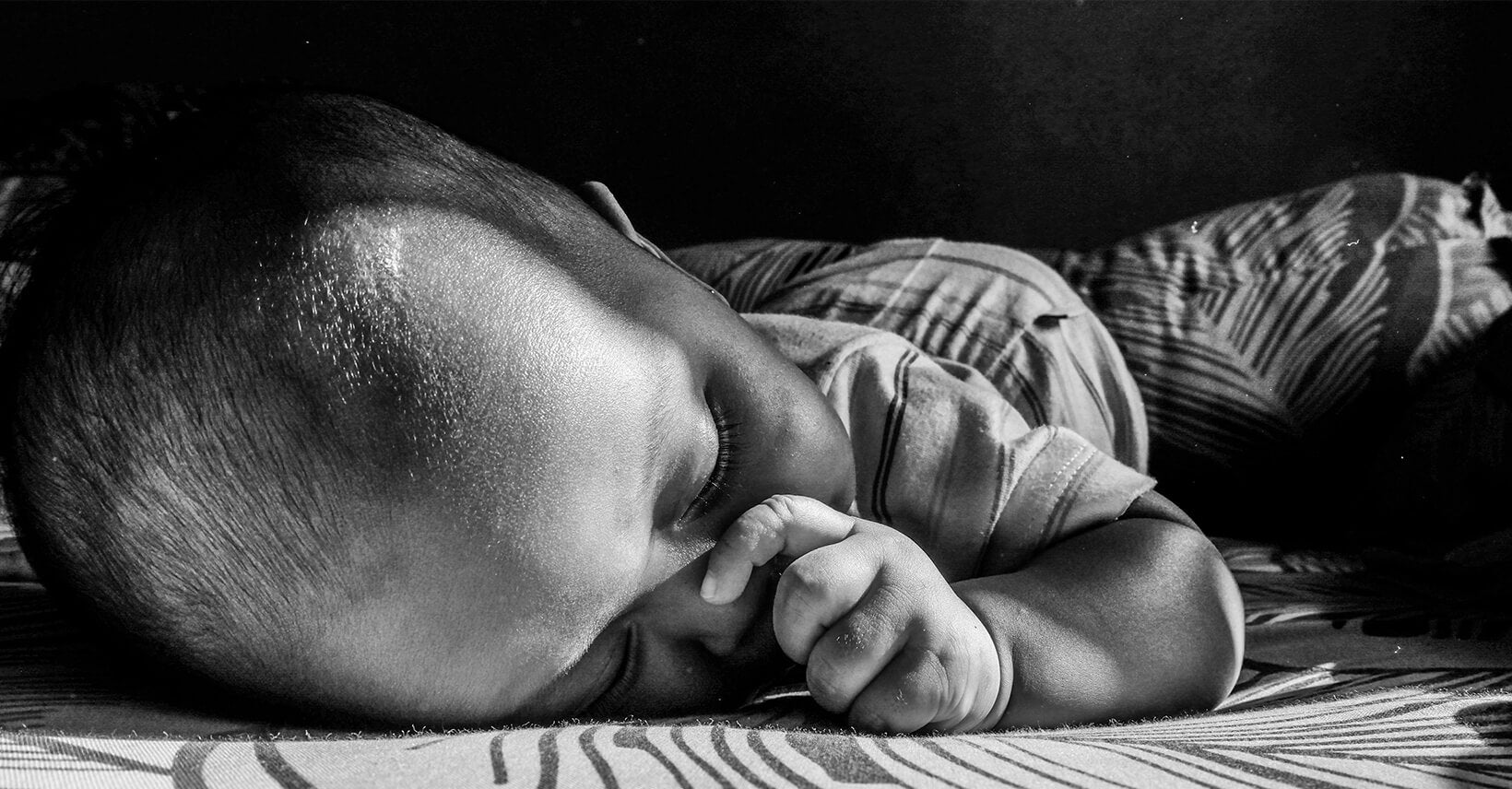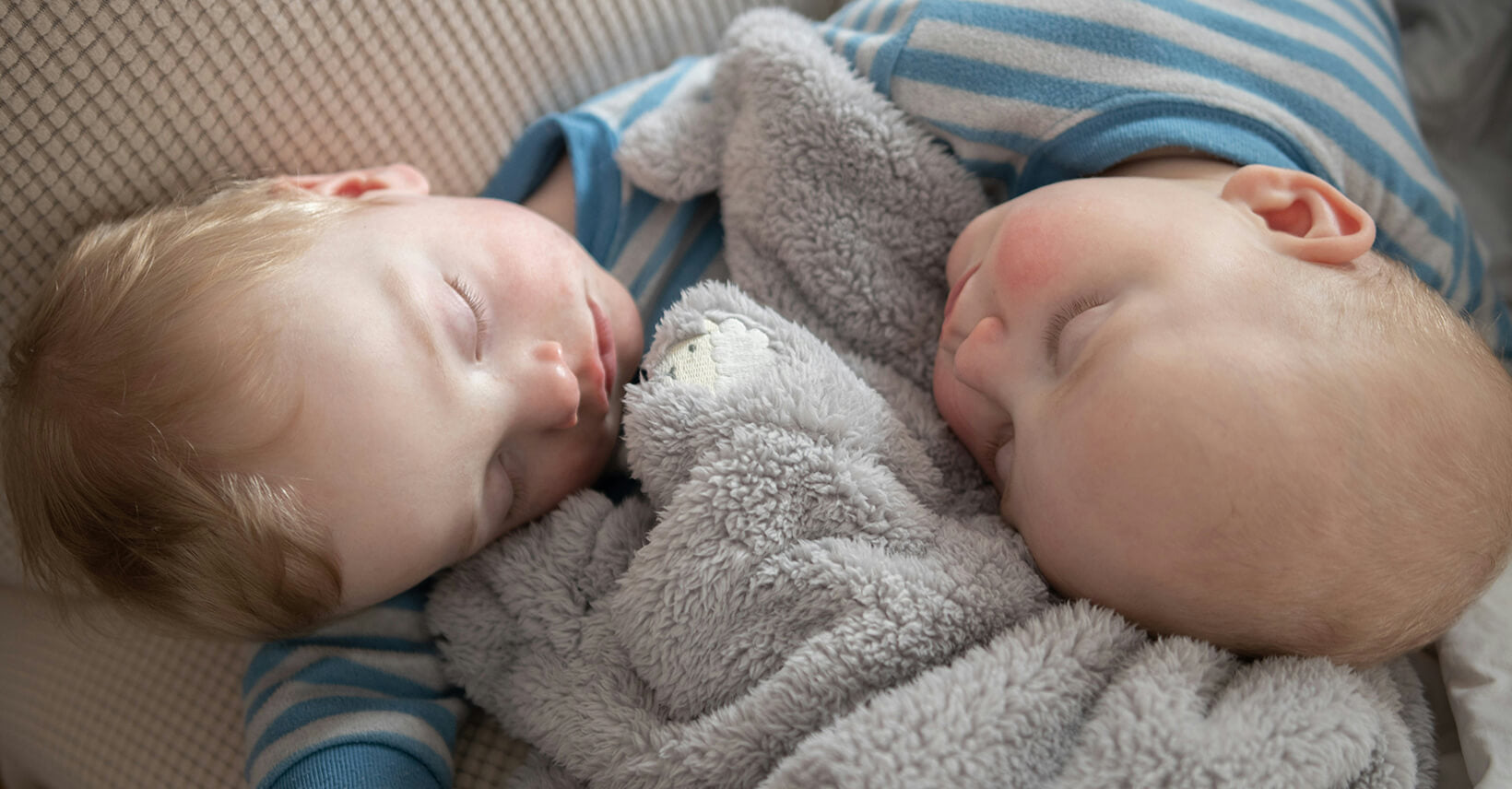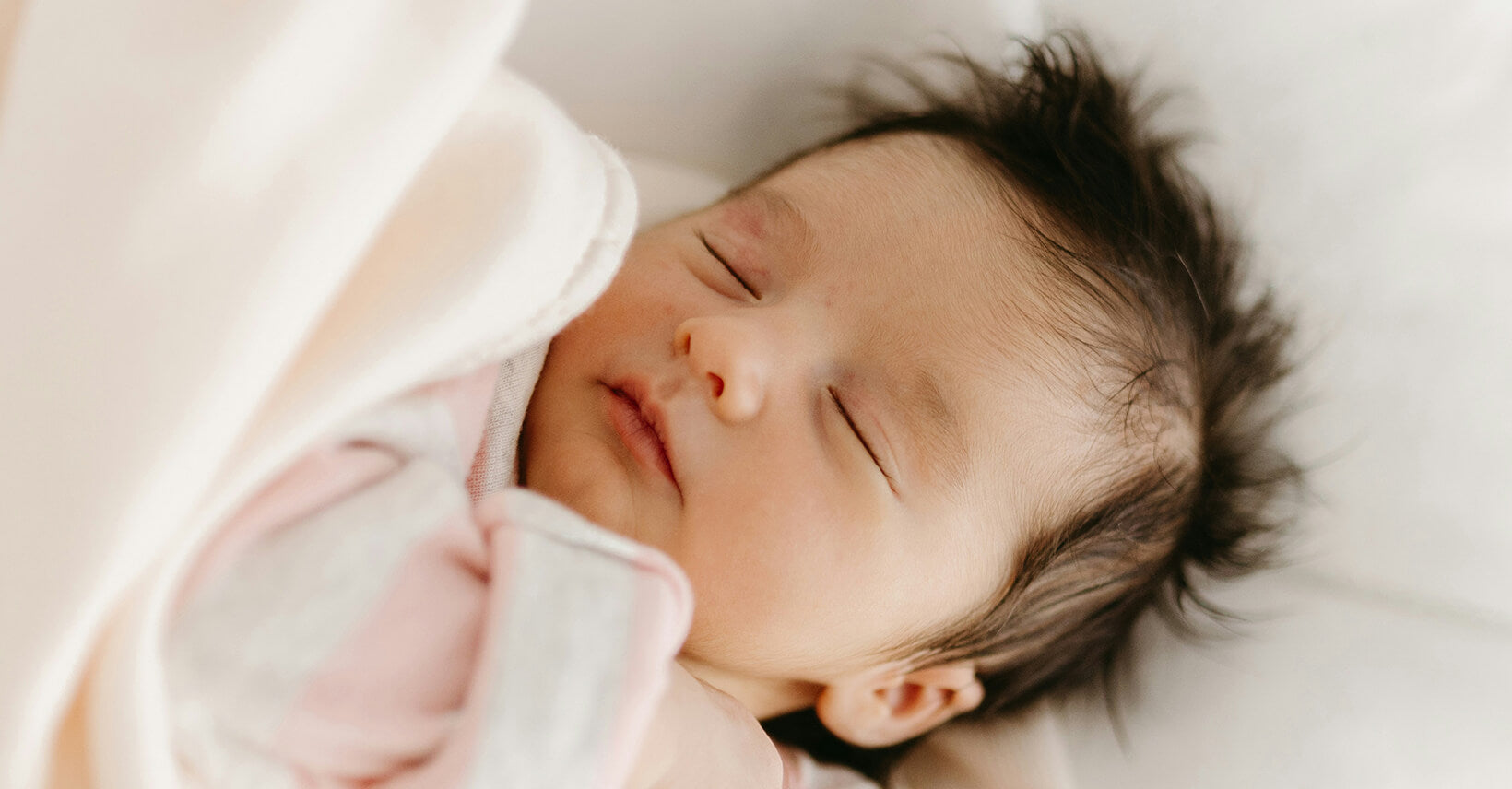
When Can Babies Sleep on Their Stomach?
The safety of our precious little ones during sleep is a top priority for parents and caregivers. As babies grow and reach different developmental milestones, we often wonder when certain sleep positions become safe for them. One common concern is whether babies can sleep on their stomachs. In this article, we will explore the guidelines and considerations surrounding when babies can sleep on their stomachs and how to ensure a safe sleep environment for our little bundles of joy.
The significance of safe sleep practices for infants
Ensuring a safe sleep environment is of utmost importance for the well-being and safety of our little ones. Sleep is a crucial time for babies' growth and development, and it is essential to create a sleep space that reduces the risk of any potential hazards.
Addressing the common question of whether it is okay for babies to sleep on their stomach
One common concern among parents and caregivers is whether it is safe for babies to sleep on their stomachs. With different sources of information and advice, understanding the guidelines and recommendations regarding infant sleep positions is vital for making informed decisions.
Understanding Safe Sleep Guidelines
Explaining the Back to Sleep campaign and its impact on reducing Sudden Infant Death Syndrome (SIDS)
The Back to Sleep campaign, now known as Safe to Sleep, was initiated by the American Academy of Pediatrics (AAP) to promote safe sleep practices and reduce the incidence of SIDS. Understanding the significance of this campaign and its impact on infant sleep safety is crucial for parents.
Highlighting the current recommendations from pediatric experts regarding infant sleep positions
The current recommendations from pediatric experts, particularly the American Academy of Pediatrics (AAP), emphasize the importance of safe sleep practices for infants to reduce the risk of Sudden Infant Death Syndrome (SIDS). Here are the specific guidelines regarding infant sleep positions.
Back to Sleep: The AAP strongly advises parents and caregivers to place infants on their back for all sleep times, including naps and nighttime sleep. This position has been shown to significantly reduce the incidence of SIDS.

Firm Sleep Surface: Infants should be placed on a firm and flat sleep surface, such as a crib mattress or bassinet, covered with a fitted sheet. Avoid using soft mattresses, pillows, or loose bedding that could pose suffocation risks.
No Co-Sleeping: Sharing a bed with the baby is discouraged, as it increases the risk of accidental suffocation or entrapment. The AAP recommends room-sharing instead, where the baby's crib or bassinet is placed close to the parents' bed for easy access during nighttime feedings and comforting.
Avoiding Soft Objects and Loose Bedding: Keep the baby's sleep environment free from soft objects, such as stuffed animals, blankets, or toys. These items can increase the risk of suffocation or choking.
Temperature Regulation: Dress the baby in light sleepwear appropriate for the room temperature to avoid overheating. It's essential to maintain a comfortable sleep environment to reduce the risk of SIDS.
Avoiding Smoking and Secondhand Smoke: Exposure to smoke, both during pregnancy and after birth, is associated with an increased risk of SIDS. Creating a smoke-free environment is crucial for the baby's health and safety.
Tummy Time: While back sleeping is recommended for sleep, supervised tummy time when the baby is awake and alert is essential for promoting healthy development and strengthening neck and upper body muscles.
Swaddling Safety: If swaddling is practiced, it should be done safely and discontinued as soon as the baby shows signs of rolling over.
In the following sections, we will delve deeper into these topics to gain a comprehensive understanding of safe sleep practices for infants and when it is safe for babies to sleep on their stomachs.
Is It Okay for Babies to Sleep on Their Stomach?
Exploring the risks associated with stomach sleeping for infants
Stomach sleeping can indeed pose potential risks to infants, especially younger babies who have not yet developed the strength and motor skills to move their heads effectively. When babies sleep on their stomachs, they may find it challenging to reposition themselves if they encounter any difficulty breathing. This can lead to an increased risk of re-breathing carbon dioxide, which may result in reduced oxygen levels in their bodies. Such circumstances can lead to suffocation or increase the likelihood of Sudden Infant Death Syndrome (SIDS), making stomach sleeping a concern for caregivers and pediatric experts.
Discussing the potential benefits and reasons some parents consider stomach sleeping
Despite these risks, some parents may consider allowing their babies to sleep on their stomachs due to specific reasons. For instance, some infants may have a strong preference for sleeping in this position, finding it more comfortable and conducive to settling into sleep. In such cases, parents might feel that their baby sleeps more soundly and peacefully on their stomachs.
Cultural practices and personal experiences may also influence parents' decisions regarding sleep positions for their babies. In some cultures or families, stomach sleeping has been traditionally regarded as a preferred or customary practice. Additionally, some parents might have raised older children who slept on their stomachs without any issues, leading them to believe that it is a safe option for their new baby.

It is essential for parents and caregivers to be informed about the risks associated with stomach sleeping and the recommended safe sleep practices. While some infants may prefer sleeping on their stomachs, it is crucial to weigh the potential benefits against the higher risk of SIDS and suffocation. If a baby shows a strong preference for stomach sleeping, it is essential to consult with a pediatrician for guidance and explore alternative sleep methods that promote safety and reduce the risk of SIDS. Remember, adhering to the guidelines recommended by pediatric experts significantly contributes to creating a safe sleep environment for babies, ensuring their well-being and restful sleep.
Identifying the age range when babies may start rolling over independently
Babies typically start rolling over independently at around 4 to 6 months of age. This developmental milestone is an exciting time but also signals the need for increased vigilance in monitoring sleep positions.
Understanding the milestone of neck strength and head control as an indicator for stomach sleeping
An essential indicator for considering stomach sleeping is when babies can hold their heads up independently and have sufficient neck strength. This milestone indicates that they can move their heads to maintain an open airway if needed, reducing the risk associated with stomach sleeping.
Promoting Safe Sleep Environment
Creating a safe sleep space for the baby to reduce the risk of SIDS
Ensuring the baby's sleep area is free from hazards, such as loose bedding, soft objects, and excessive padding. Providing a firm and flat sleep surface, such as a crib or bassinet, with a sleep sack is essential. Avoiding co-sleeping or bed-sharing is also recommended to reduce the risk of suffocation.
Providing proper guidance to caregivers and family members about safe sleep practices
Educating all caregivers and family members about safe sleep guidelines is crucial. Whether the baby is in the care of parents, grandparents, or other caregivers, ensuring everyone follows the same safe sleep practices can help reduce the risk of accidental stomach sleeping.
What to Do If Baby Rolls Onto Stomach While Sleeping
Tips for transitioning the baby to the back sleeping position
If a baby rolls onto their stomach during sleep, gently repositioning them onto their back is recommended. However, once babies can roll independently, it is not necessary to continuously adjust their sleep position.
Monitoring and reassurance techniques to ensure the baby's safety during sleep
Parents and caregivers can use baby monitors or periodic checks to ensure the baby is in a safe sleep position. While it is natural to feel concerned, once babies can roll on their own, they can generally move themselves into a comfortable and safe position.
Addressing specific medical conditions or risk factors that may influence sleep positions
In some cases, babies may have medical conditions that require alternative sleep positions. It's essential to discuss any concerns with a pediatrician to determine the safest sleep position for the baby's individual needs.
Consulting with a pediatrician for individualized guidance on safe sleep practices
If parents have questions or uncertainties about safe sleep practices, consulting with a pediatrician can provide personalized advice and recommendations based on the baby's unique health and developmental status.

In a nutshell,creating a safe sleep environment for our precious little ones is a responsibility that every parent and caregiver should embrace. While the question of allowing babies to sleep on their stomach may arise, following safe sleep guidelines is vital to protect them from potential risks, such as Sudden Infant Death Syndrome (SIDS).
Understanding the appropriate age for babies to start rolling over independently and providing a safe sleep space are essential steps in promoting their well-being. By educating ourselves and all caregivers about safe sleep practices, we can ensure consistency and prioritize the baby's safety during their sleep.
Let us remember that every baby is unique, and their needs may vary. It's crucial to stay informed and consult with pediatricians, especially if there are any specific medical conditions or risk factors that may influence sleep positions.
By prioritizing safe sleep practices, we not only create a nurturing sleep environment but also offer our little ones the gift of a restful and secure sleep, which plays a vital role in their healthy growth and development. So, let's embrace the journey of parenthood with knowledge and care, ensuring our babies have the best possible start in life.
Our favorites

Yujia Shi
An expert in sleep sack design, is a valued contributor to Kaiya Baby's blog. With a strong background in baby sleep bags and maternal care, she is highly regarded for her professionalism. Yujia Shi prioritizes baby comfort and safety in her designs, using high-quality materials. Her insightful articles on sleep bags have been featured in reputable publications and have gained a significant readership. Trust Yujia Shi to help you create a comfortable and safe sleep environment for your baby, backed by her proven track record in the industry.






Leave a comment
This site is protected by reCAPTCHA and the Google Privacy Policy and Terms of Service apply.